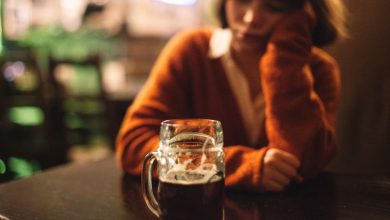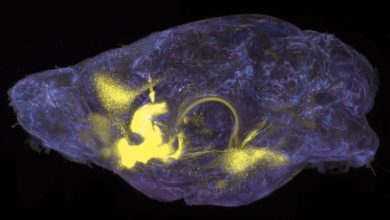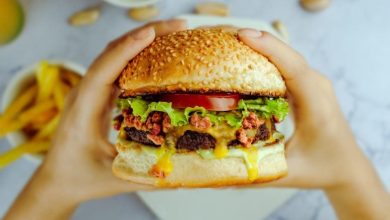‘AI helps me to make wine for younger drinkers’

- By Stav Dimitropoulos and Will Smale
- Economic journalists
Image source, Kara Maraden
Kara Maraden looks after a large number of vineyards.
Director of viticulture at major American wine company Foley Family Farms, she is responsible for more than 5,200 acres (2,000 hectares) of vineyards, spread across 1,000 miles of California and Oregon.
She obviously can’t be everywhere at once, but using AI technology, Maraden can remotely check each vineyard’s water needs from her laptop.
“I can go online and see what irrigations are needed in Santa Barbara, 300 miles away,” says Mr. Maraden, based in Napa, northwest of San Francisco.
While assessing grapevine water needs would previously have been done through human judgment and calculation, Foley now uses sensors made by Tule Technologies, a California-based irrigation company.
The sensors, which look like mini weather stations, are placed throughout the vines. They measure humidity levels, temperatures, wind speeds and other environmental variables.
All of this data is then fed into Tule’s AI software system, which has been trained to calculate how much moisture will evaporate from the soil and vines under different weather conditions. The AI then determines how much irrigation the vines need and when, and notifies winemakers via an app notification.
“We are still on the ground,” adds Ms. Maraden. “But data helps us make informed decisions based on science, rather than just feelings. Feelings aren’t bad, but we like using data.”
Foley Family Farms, along with its sister company of the same name, Foley Family Wines, produces American wines under 23 different brands. Ms Maraden says AI irrigation sensors “have improved the quality and consistency of the grapes”.
Tom Shapland, general manager of Tule, says another benefit of sensors is that they can help overcome labor shortages. “AI provides 24/7 monitoring in the vineyard.”
Tule is also creating an AI-based app called Tule Vision, which can determine the thirst of vines after the human user records a few minutes’ video of them. The AI was trained with hundreds of images of vines under different water requirements.
Other suppliers of AI-powered vineyard monitoring equipment include US tech giant Cisco and smaller companies Ceres Imaging and Bloomfield AI.
Once the grapes intended for winemaking have been harvested, they are transported to the cellar for fermentation. Here too, AI is now involved.
California-based technology company Tastry is creating an AI-powered app that helps winemakers produce wine that appeals to a large number of consumers. To do this, the software analyzes the chemical composition of a wine and quickly compares it to a database of taste preferences of 248 million wine drinkers in the United States.
Taste tests for everything from a wine’s sugar level to acidity and tannins. The latter are bitter and astringent compounds coming from the skin, seeds and stems of grapes.
The idea is that Tastry can help winemakers better blend final wines from many base wines, varying the percentage of each until a popular taste profile is achieved.
Alexandre Rémy, managing partner and winemaker at Atlas Wine Company, a California-based wine brand, describes Tastry as his “GPS system.”
“If I want to create my red blend, I choose from 10 different vineyards,” explains Mr. Rémy. “This is where AI really shines. It helps me determine my goal, whether I want to attract a younger audience or perhaps an audience that prefers a competitor’s wine.
“I can enter my settings into the system, and it will offer blend suggestions based on that.”
Image source, Alexandre Remy
Monika Christmann is a professor of oenology – the science of winemaking – at Hochschule Geisenheim University in Germany. She says wineries that produce large volumes and need consistency year after year might find AI particularly useful.
But she also warns that the interaction between the different components of wine is difficult to predict and is not yet fully understood by AI.
For wine traditionalists, the use of AI in winemaking, whether in the vineyard or in the cellar, is anathema. They argue that this destroys the craftsmanship that makes wine so special.
“No algorithm can truly understand the complex interplay between climate, soil and grape varieties that gives wine its subtlety and character,” says Jonathan Kleeman, head sommelier at UK restaurant Tom Sellers Story Group.
“Nor can he appreciate the aesthetics of balance, structure and aromas that distinguish an exceptional vintage. Wine talking about minerality, acidity or fruitiness makes no sense to a machine. Real winemakers trust their palate, not (computer) processors.”
Image source, Foley Family Wines
Tom Ashworth, chief executive of wine retailer Yapp Brothers, says if he produced wine he wouldn’t use AI.
“The extent to which the winemaker allows AI to take control of decision-making – replacing hundreds of years of experience – depends, I suppose, on the risk appetite of the winery and the precision of the AI itself.
“Currently, I would not entrust decision-making on key winemaking processes to AI, nor would I let AI manage customer services without supervision.”
Back in California, Ms. Maraden counters that AI aims to help human winemakers, not replace them. “We are boots on the ground, we are always in the vineyard ourselves,” she says.
“The real goal of AI (in wine) is to make more informed, science-based decisions.”
News Source : www.bbc.com
Gn Health





